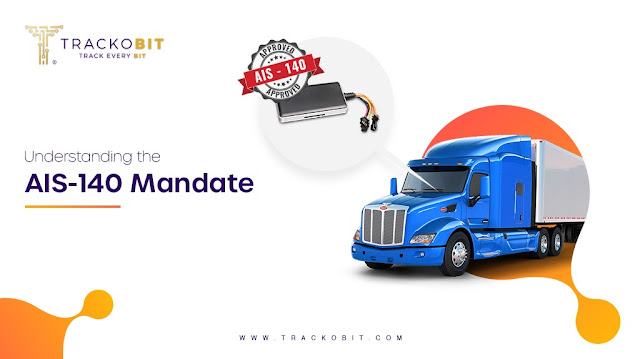What Is AIS 140 and Why is it Mandatory in India?
What is AIS 140? Why is it Mandatory?
AIS, short for Automotive Industry Standard, are the regulations released by the Automotive Industry Standard Committee (AISC) in collaboration with the Ministry of Road Transportation and Highways (MoRTH).
These guidelines were created with the intention of both increasing road safety and also creating an intelligent transportation system. So what exactly are these guidelines that commercial vehicles have to follow? The regulations target several different aspects that go into the GPS tracking industry.
All the instructions under these mandates are very extensively detailed. But here are the most important guidelines you should definitely know about simplified, especially when running a fleet:
AIS 140 Regulations for Hardware
For the hardware, the ministry has the following rules. Not adhering to these rules can lead to not just heavy fines, but also suspension of transport permits. The regulations generated for the hardware aspect of the system are:
Vehicles should use a modem for information transmission. While many GPS systems also use cellular data or SIM cards, these regulations insist on the use of satellite modems a.k.a GPS Trackers
The GPS Tracking device should have a backup of at least 4 hours.
It is necessary to install an emergency button in the vehicle. This system should send data like the location to two IP addresses. One of them being a government database and the other one being an emergency support system.
The device should have good security. They should be tamper-proof so that there is no way of incorrect data entering the database.
AIS 140 Regulations for Software
Along with the hardware, regulations also have a lengthy list of requirements for the software part of GPS tracking. Some of the important rules thus introduced are:
Compatibility should be a huge part of the reason for choosing software to track your AIS 140-certified GPS device. It should be able to connect with the trackers described above.
The system should be able to track more than just the vehicle’s location. It should have records of a vehicle’s performance, maintenance, and more
Managers of the system should receive emergency alerts. In case of no internet available, the alerts should be sent out via SMS.
Advantages of AIS 140 Mandate
So how can the widespread use of the AIS 140 regulations change how vehicles travel on the roads? On the negative side, fleet businesses that have been using GPS tracking software for their operations need to see if their devices meet the criteria the government has set. If the answer to that is no, then they will be forced to invest in devices.
But the positive impact of this system way overshadows the negatives:
Higher Demand for GPS: With so many sectors affected by these guidelines, there is bound to be an influx in the demand for both GPS devices and software. This means a growth in the number of connected vehicles on the roads. The prediction about 55% of all commercial trucks being connected by 2025 seems all the more achievable now.
Boost in Safety: Integration of emergency buttons in all public transportation vehicles leads to a lower chance of fatalities in case of accidents. But the vehicle maintenance and GPS tracking, the accident rate itself also come down. A study shows that 42% of fleets using GPS tracking saw a decrease in their accidents.
Higher Visibility: When operating in a large fleet, it is usually very difficult for managers to keep track of all their vehicles. But when GPS is added to the operations, it becomes easier to know the location and activities of every vehicle.
What Role Does Fleet Management Software Play in the Execution of AIS 140 in India?
When we look at a fleet management system, its core value is to help fleet businesses ensure smooth and planned operations. Thus, the software, often a part of the fleet management system, helps managers target specific parts of their fleets’ functioning and then work on eliminating issues they might encounter.
Data plays a large part in this process. Without understanding the issue, fleet businesses cannot work on correcting them. TrackoBit is a fleet management software that not only helps businesses plan their fleet operations but also helps adapt them to the AIS 140 regulations. Some ways this is made possible are:
Device Compatibility: TrackoBit is compatible with a large range of protocols. This means that even with a change in the type of GPS tracker you choose, your software will not require modifications. It also has the option to add an emergency button to your vehicle for the necessary layer of security.
Multi-dimensional Solution: All the features that this software offers allow businesses to execute long-term changes to make their fleets safer. They help keep the vehicles healthy and profitable. Thus, your fleets and our system are a match made in heaven.
Saves History: As we already learned, optimising a fleet is impossible without knowing its pain points. TrackoBit offers a history of vehicle activities for up to six months. This is way higher than the 90-day mandatory requirement. This data helps managers understand the shortcoming of the fleet and work on them.
Customisable Alerts: All the solutions offered by the software allows fleet businesses to
choose the kind of alerts they want to receive. Alerts allow managers to take immediate
action in case of emergencies.


.png)
.png)
Comments
Post a Comment